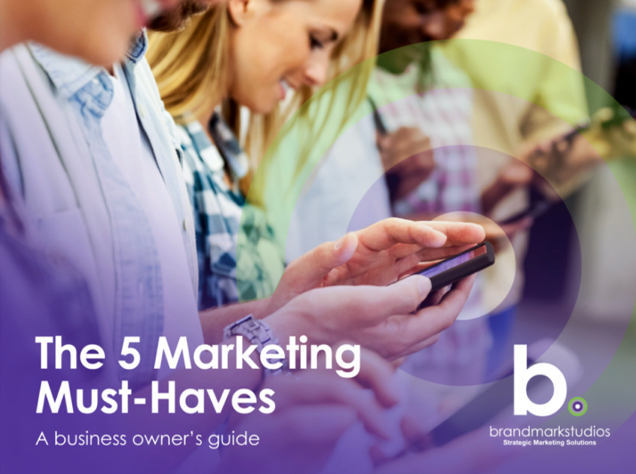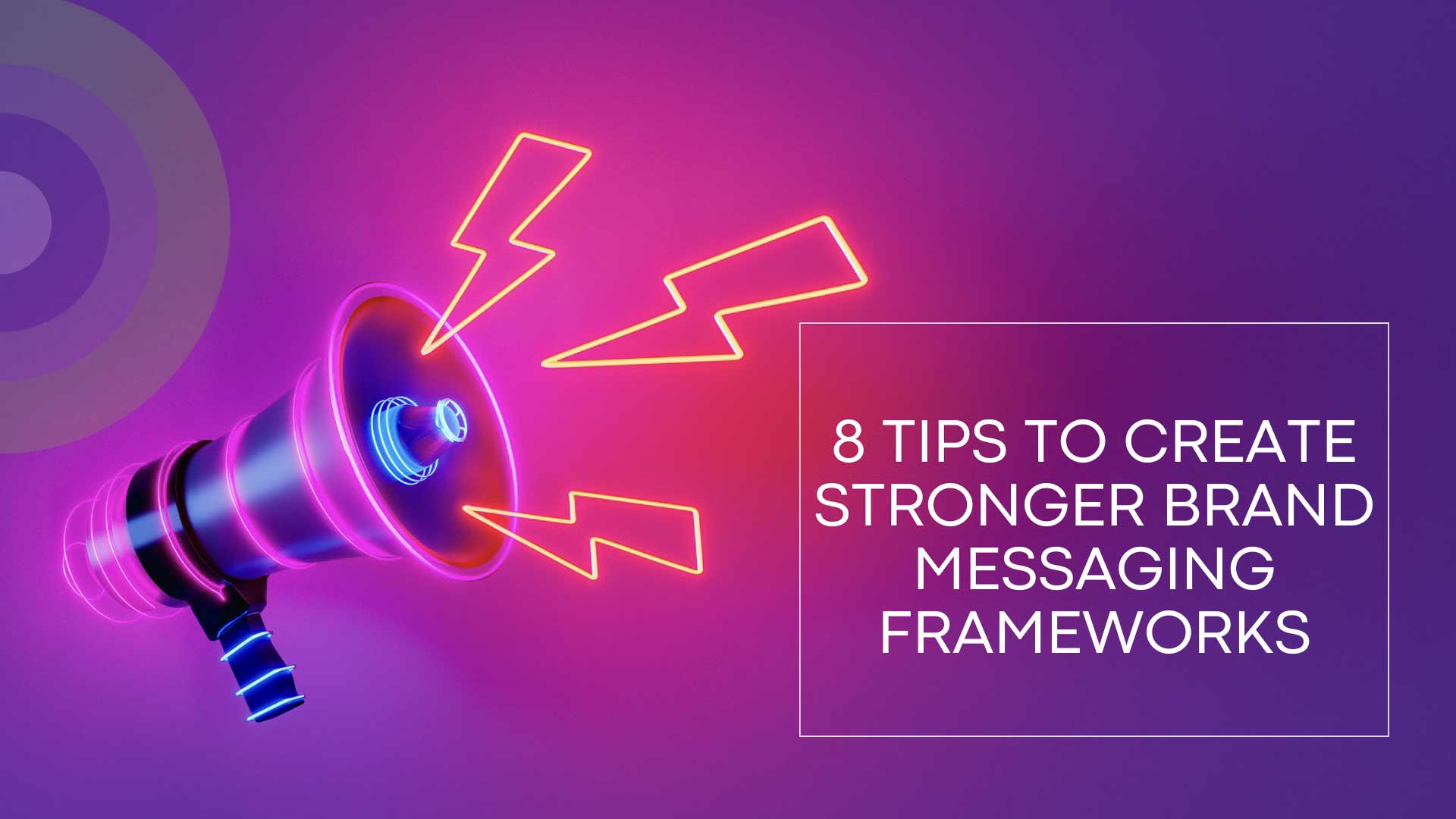Your brand is a living organism that needs to be safeguarded. With the start of a new fiscal year, the evolution of brand messaging should be front of mind, shaping how you connect with your customers. It's not just about what you offer; it's about how you communicate your brand's promise, essence, and values.
The Fundamentals of Brand Messaging
If your brand represents the overall image and attributes of your company, then brand messaging can be seen as the art of articulating your brand's identity with your target audience. It encompasses the language, tone, and values that define what your business is. The impact of effective messaging is profound, influencing customer perceptions, building trust, and fostering brand loyalty. It’s about how you can make your customers truly “feel” your brand.
Here at Brandmark Studios, we’ve got 8 tips to help you build stronger brand messaging for your business:
1. Know Your Target Audience
The first step in creating a robust brand messaging framework is understanding your audience. In 2024, businesses leverage advanced analytics and data-driven insights to create detailed customer personas. By understanding your audience's needs, preferences, and behaviors, you can tailor your messaging to speak directly to them.
Example: A tech company uses advanced analytics to identify that a significant portion of its target audience prefers video content over written articles. Armed with this insight, the company tailors its brand messaging by incorporating more video content in its marketing strategy, piquing interest and leading to increased engagement and brand affinity.
2. Define Your Brand Identity
Your brand's identity is the foundation of your messaging. Clearly defining your brand values, mission, and unique selling proposition (USP) sets the stage for compelling communication. In a world saturated with options, a well-defined brand identity helps your business stand out and connect with the right audience.
Example: An eco-friendly clothing brand clearly defines its brand identity by emphasizing sustainable practices, ethical sourcing, and a commitment to environmental conservation. This clear brand identity not only attracts environmentally conscious consumers but also differentiates the brand in a market saturated with fashion options.
3. Craft Compelling Brand Stories
Stories have the power to captivate and engage. Creating brand stories that emotionally resonate with your audience will help build consumer rapport over time. Identify key narratives that resonate with your audience. Whether it's the story of your brand's inception, a customer success story, or a behind-the-scenes glimpse, weaving compelling narratives enhances the emotional connection between your brand and your customers.
Example: A coffee brand shares the personal journey of the founder's exploration of remote coffee farms, showcasing a dedication to quality and the human touch behind their products. This narrative resonates with consumers, creating a sense of connection and loyalty as they feel a part of the founder‘s and the brand’s journey.
4. Build Consistency Across Channels
Consistency is key in brand messaging. Your messaging should remain cohesive across all touchpoints, from social media and email marketing to your website and in-store experience. Successful brands seamlessly integrate their messaging into every communication channel, reinforcing their brand identity with every interaction.
Example: A fitness brand maintains consistency in its messaging by using the same motivational tone, imagery, and color palette across its social media, website, and email campaigns. This uniformity reinforces the brand's identity and values, ensuring a cohesive experience for customers interacting with the brand on different platforms.
5. Adapt to Emerging Trends
Staying relevant means adapting to emerging trends. Brands must align their messaging with the latest marketing trends. Whether leveraging virtual reality experiences, incorporating interactive content, or harnessing the power of AI or augmented reality, aligning their messaging with emerging trends keeps your brand fresh and resonant.
Example: A cosmetic brand embraces augmented reality technology, allowing customers to virtually try makeup products through a mobile app. By aligning its messaging with the trend of augmented reality in beauty, the brand not only excites the customer experience but also positions itself as innovative and in tune with the latest trends.
6. Utilize Technology and Tools
Technology plays a pivotal role in shaping brand messaging strategies. Artificial intelligence (AI) and machine learning enable businesses to deliver personalized messages tailored to individual preferences. Chatbots and conversational AI enhance real-time interactions, providing immediate and customized responses — adding an extra layer to the customer experience.
Example: An e-commerce platform utilizes AI algorithms to analyze customer preferences and browsing behavior. This enables the platform to send personalized product recommendations and targeted messages, significantly improving the customer shopping experience and increasing conversion rates.
7. Test and Iterate
Creating a strong brand messaging framework is an iterative process. A/B testing allows businesses to experiment with different messaging approaches and analyze the impact on audience engagement. Gathering feedback from your audience and continually refining your messaging based on performance data ensures that your brand remains agile and responsive.
Example: An online retail store conducts A/B testing on two different product descriptions. By analyzing customer interaction and conversion rates, they discovered that a more storytelling-oriented description leads to a higher conversion rate. This data-driven approach allows them to refine their messaging strategy for better results.
8. Build Case Studies and Examples
Examining successful brand messaging campaigns provides valuable insights. Organizations that have effectively navigated the evolving landscape serve as case studies. Analyze what made these campaigns successful, from the clarity of messaging to the channels used, and extract key takeaways that can be applied to your own marketing strategy.
Example: A software company showcases a case study of a successful product launch campaign, highlighting the specific narrative and messaging strategies, channels used, and the measurable impact on brand awareness and sales. This example serves as inspiration for other businesses looking to replicate a successful brand messaging approach.
Hitting the Mark Every Time
Now that we’ve explored the many ways you can strengthen your brand messaging frameworks, let’s take a closer look at a brand that hits the mark every time with its messaging. Apple's marketing campaigns are renowned for their clarity, simplicity, and effectiveness in conveying the brand's message. Whether it's their product launches, advertisements, packaging, or branding efforts, Apple knows how to communicate its values and commitment to quality to its audience.
Consider Apple’s ongoing “Shot on the iPhone” campaign. Apple encourages iPhone users to submit their best photos and videos taken with their iPhones, which are then curated and featured in various marketing materials like billboards, print ads, and social media posts. With one simple request, they’ve demonstrated their brand quality in a way that excites its customers and is inclusive of them within the marketing cycle.
Revitalize Your Brand Identity with Brandmark Studios
As we wrap up our exploration into creating stronger brand messaging frameworks, it's important to remember that branding improvement is always ongoing. The complexity of the digital landscape requires a continuous reassessment and adaptation of your brand messaging strategies. By incorporating the outlined principles into your approach, your business can thrive in the evolving marketing terrain, remaining fresh and fostering lasting connections with your consumers.
Ready to revitalize your brand? Partner with Brandmark Studios and take your brand identity to new heights.





